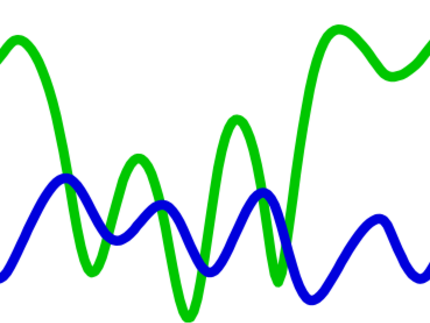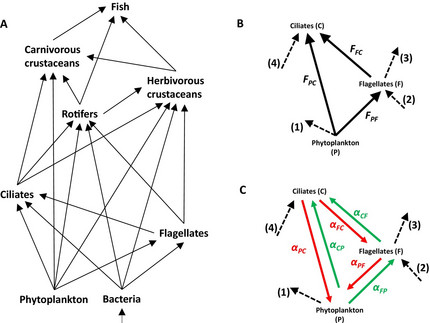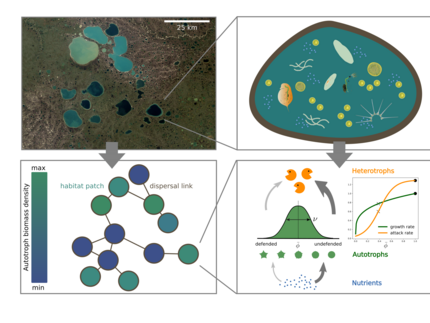Flexibility matters: Interplay between trait diversity and ecological dynamics using plankton communities as model systems.
Diversity in functional traits enables populations and communities to adapt to changing environmental conditions. This influences their biomass dynamics and leads to eco-evolutionary or biomass-trait feedbacks. We study these processes in predator-prey systems by combining mathematical modelling with chemostat experiments and long-term data analysis.
Research Topics
Structure, Stability, and Function of Food Webs
Food webs are highly complex systems that describe how species within an ecosystem interact through predator–prey relationships. We conduct mathematical analyses of empirical food webs as well as numerical simulations of computationally generated model food webs. Among our objectives is to understand how natural food webs maintain their stability despite substantial fluctuations in environmental conditions and population sizes. A further goal is to identify species that exert particularly strong effects on other species when perturbed. Additionally, we investigate how evolutionary adaptations in predator and prey species influence not only their own survival but also that of their interaction partners.
Self-Organized Pattern Formation in Meta-Communities
Meta-communities are assemblages of local ecological communities interconnected through the dispersal of interacting species. By integrating ecological dynamics across multiple spatial scales, they play a pivotal role in advancing our understanding of the processes that shape biodiversity patterns and ecosystem functioning. Within local communities, populations of different species interact via mechanisms such as interspecific competition for shared resources or trophic interactions like predation, while conspecific populations in different habitat patches interact through individual dispersal.
Habitat heterogeneity constitutes a key driver of biodiversity in meta-community contexts. Spatial variation in abiotic and biotic environmental conditions across habitat patches generates diverse ecological niches, thereby promoting species richness at the regional scale. Moreover, through source–sink dynamics, this heterogeneity can enhance diversity at the level of local communities. While such habitat heterogeneity may result from exogenous environmental gradients (e.g., variation in soil composition or resource availability), it may also emerge endogenously via a process known as self-organized pattern formation. In spatially discrete systems such as meta-communities—where the landscape is inherently subdivided into distinct habitat patches—these emergent patterns are expressed as spatial differences in species abundances across the constituent patches.



